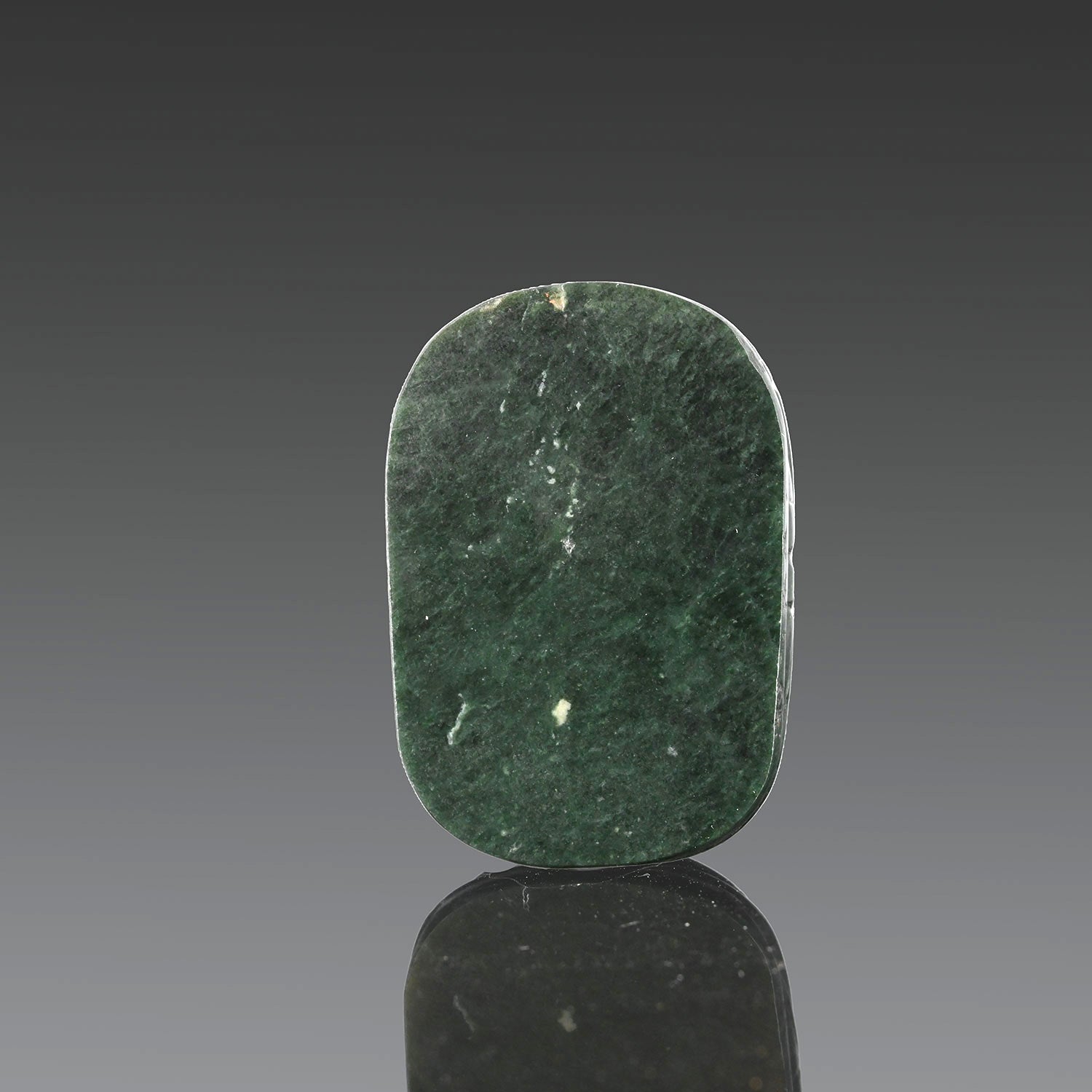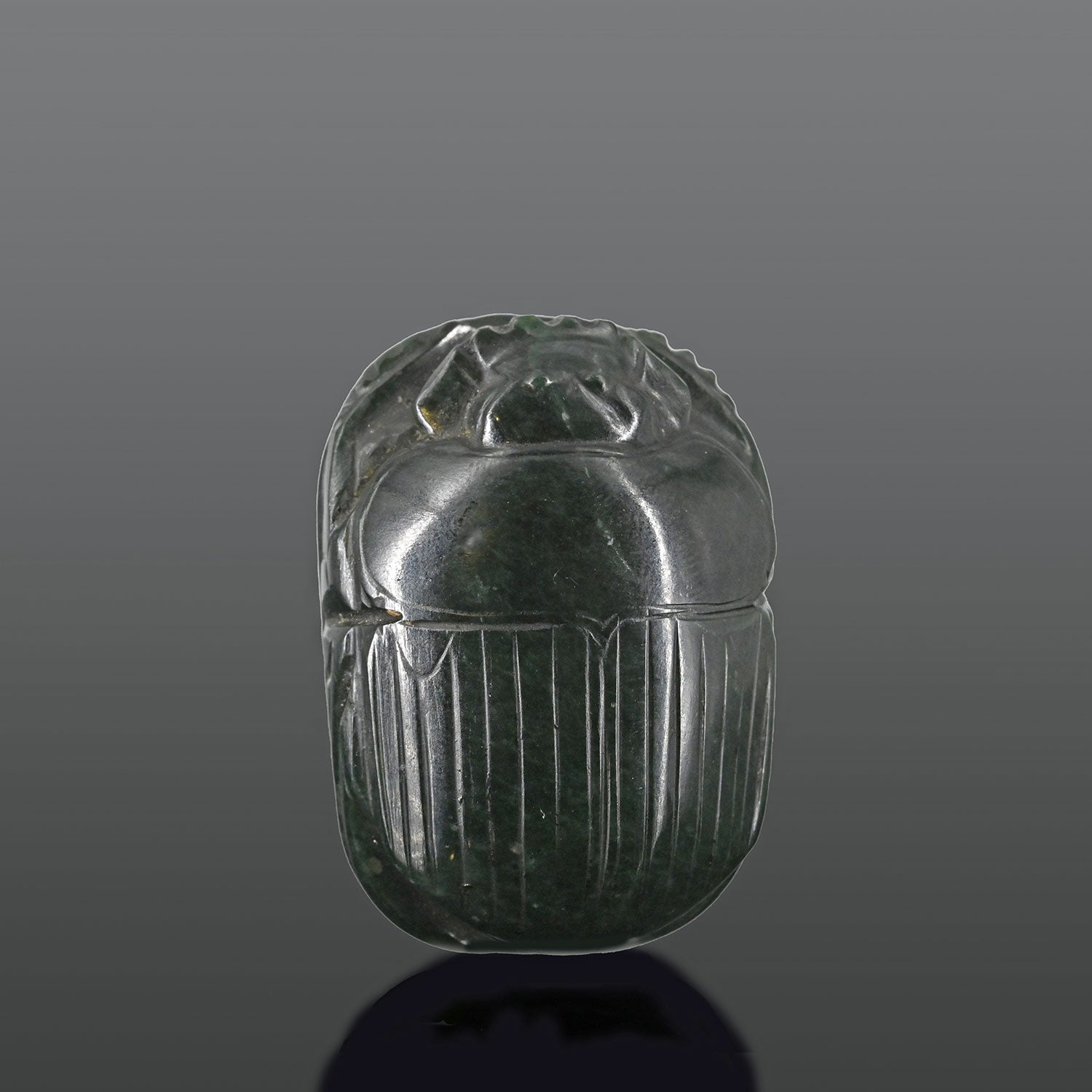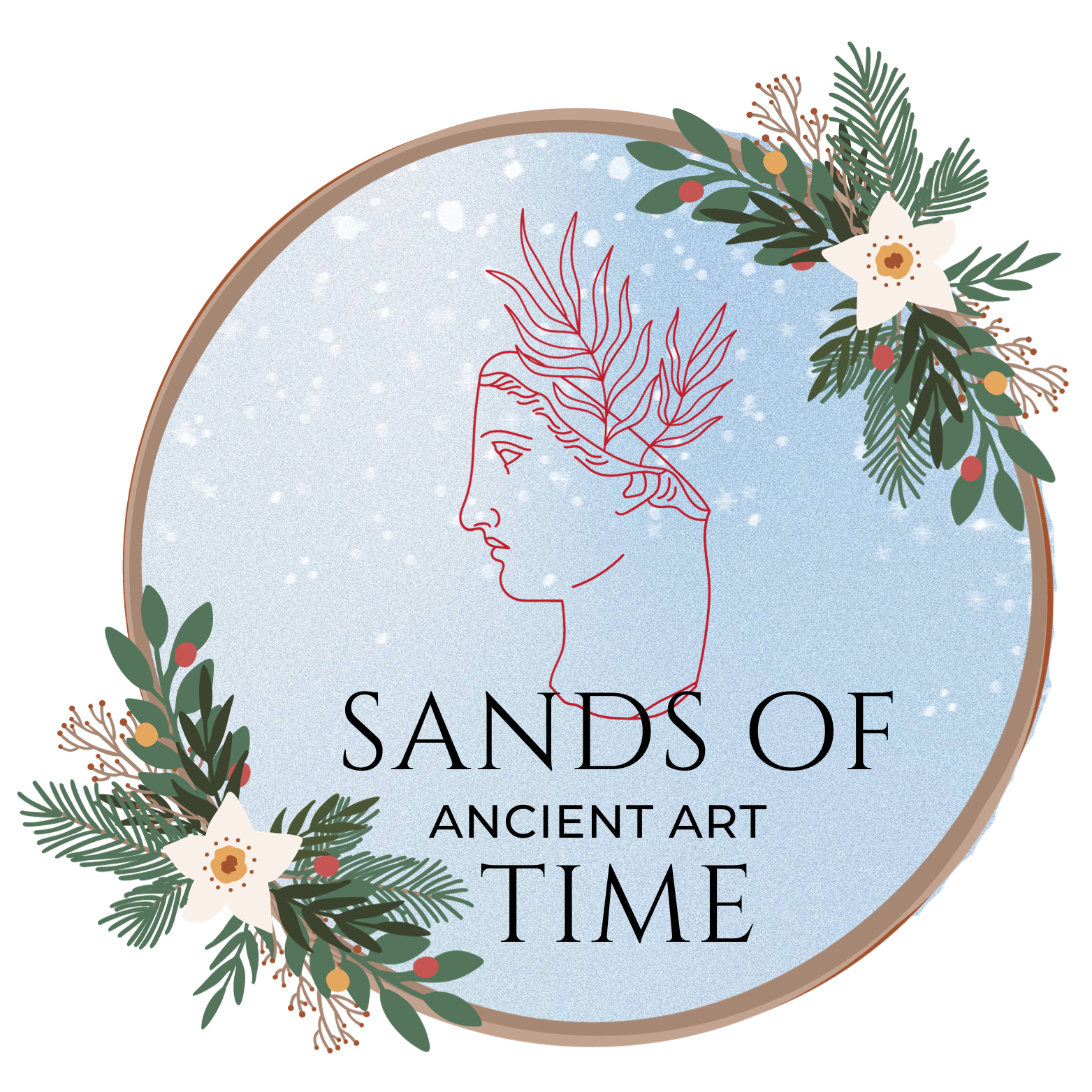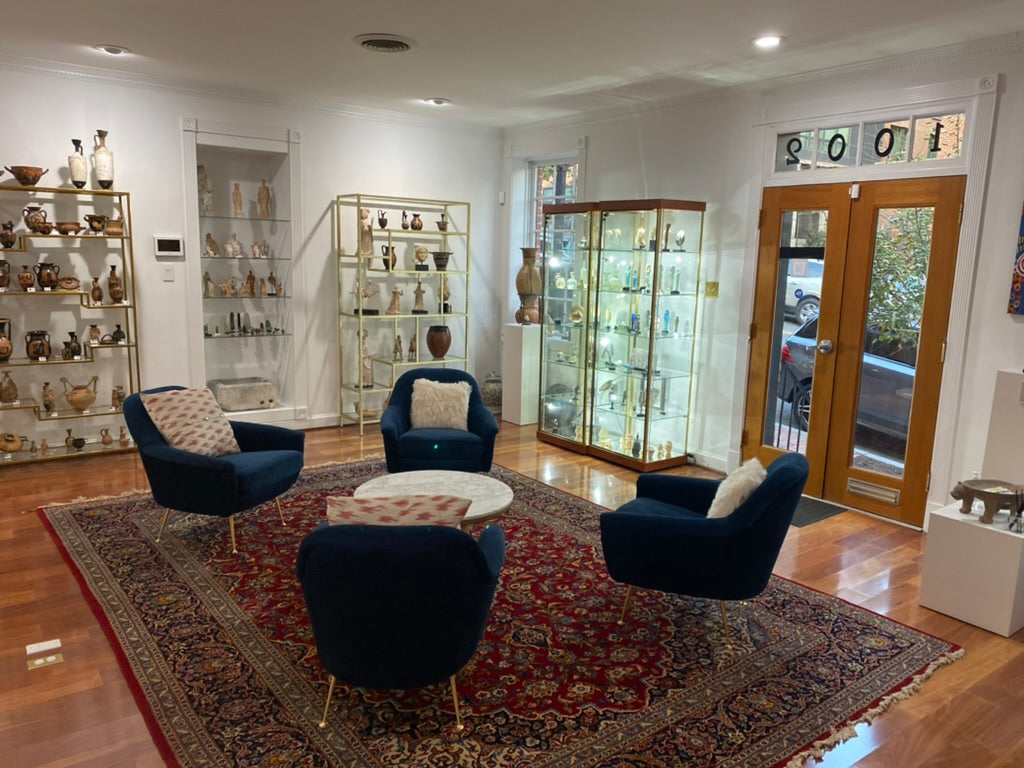



An Exhibited Egyptian Green Serpentine Heart Scarab, 26th Dynasty, ca. 664 - 525 BCE
This object qualifies for free USA shipping and a flat rate fee of $75 if shipping internationally.
Carved from a rich green serpentine and hand polished to a soft luster, this large heart scarab captures the power and elegance of one of ancient Egypt’s most enduring symbols of rebirth. Representing Khepri, the scarab-headed god of the rising sun, the form is modeled after the sacred Scarabaeus sacer beetle. The sculptor has given careful attention to detail: the five-notched clypeus shows the deeply carved head and eyes, while the prothorax and wing cases (elytrae) are neatly divided by fine incisions. Even the tibiae, drawn close beneath the body, are delicately indicated. The result is a beautifully balanced, symmetrical scarab with refined proportions and a surface that still gleams after more than three thousand years.
Heart scarabs were treasured objects in Egyptian funerary practice. Placed over the heart, they were believed to safeguard the soul and assist in resurrection, tying the individual’s destiny to the eternal cycle of the sun. Their association with Khepri, who each day rolled the sun into the sky, made them powerful talismans of renewal. The absence of a longitudinal perforation, typical of these large examples, further confirms its ritual function rather than use as jewelry.
This particular scarab is not only a superb example in terms of scale and condition, but it also comes with a distinguished exhibition history. It was exhibited at the Worcester Art Museum in the acclaimed exhibition "Jewels of the Nile: Ancient Egyptian Treasures from the Worcester Art Museum" (June 2022–January 2023), catalogued as object E.19.22 (EGY.42), with loan number L173. Its presence in such an important show underscores both its artistic merit and its cultural resonance.
References: Andrews, Carol, 1994. Amulets of Ancient Egypt, chapter 4: Scarabs for the living and funerary scarabs, University of Texas Press, pp 50-59
cf: The Metropolitan Museum of Art, Accession Number 15.3.217.
Exhibited June 2022 - January, 2023: Worcester Art Museum "Jewels of the Nile", Object E.19.22 (EGY.42), loan number: L173
Condition: The scarab is intact and in excellent condition overall. An exceptional example.
Dimensions: Length: 1 7/8 inches (4.7 cm)
Provenance: Private Boston collection acquired from the trade in 1997 and accompanied by a copy of the original purchase invoice and dealer issued certificate of authenticity.
QUESTIONS? Just click the Contact Us tab on your right.
We ship Tuesday to Friday with FedEx and usually same day if your order is received before 2pm. Within the continental USA, packing, shipping and insurance is free. Depending on size and destination, delivery times range from one to five business days.
For overseas shipments we charge a small flat rate which includes packing, preparation of all customs paperwork, insurance and carrier fees in compliance with all USA and International customs requirements.
Overseas shipments are sent via FedEx, DHL, or UPS International Priority, so contact us if you have a shipping preference. International customers are responsible for all duties and taxes.
Sands of Time provides a lifetime, unconditional guarantee of authenticity and provenance. Every object you purchase from us is accompanied by a Certificate of Authenticity, stating culture, provenance, and age.
Furthermore, we conduct due diligence to ensure the item, to the best of our knowledge, has not been illegally obtained from an excavation, architectural monument, public institution, or private property. Wherever possible, reference is made to existing collections or publications.Wherever possible, reference is made to existing collections or publications.
Choose options







